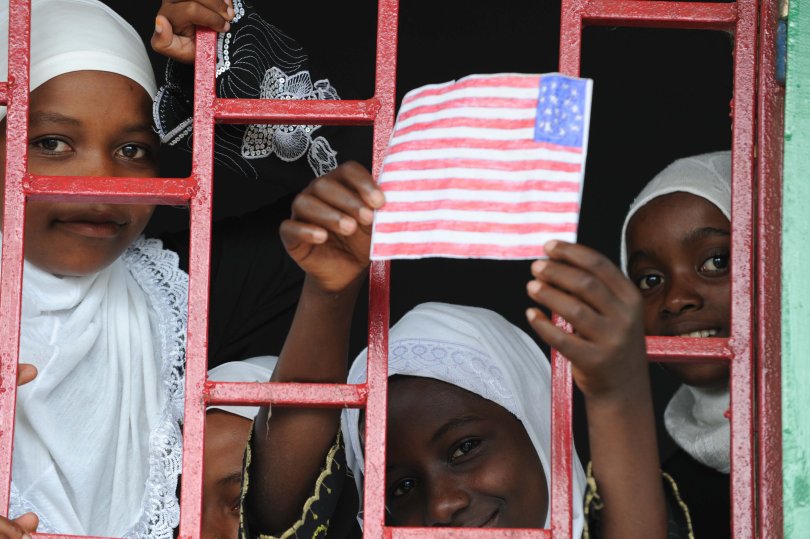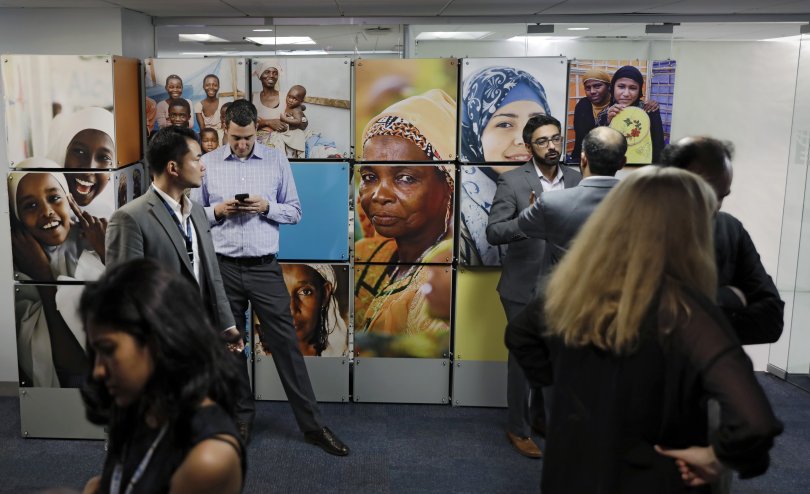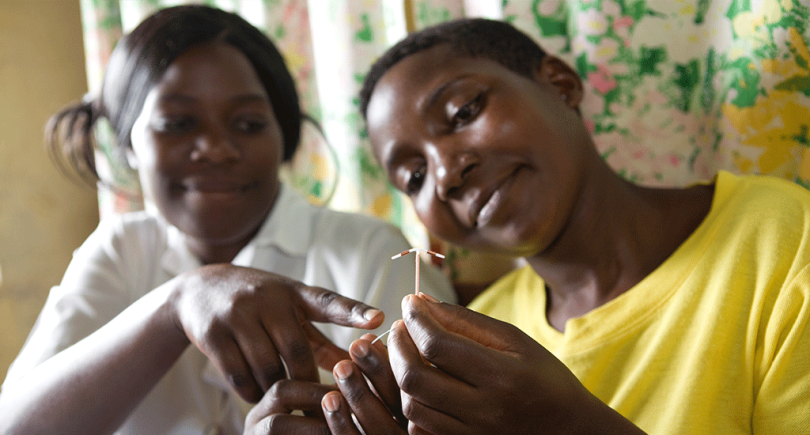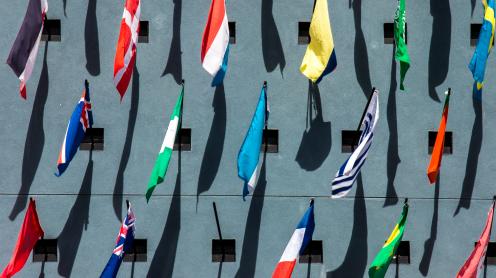Development aid: between solidarity and self-interest

© CC BY-ND Albert González Farran-ONU, Darfur
Over the last few decades, the amount of money given in development aid has increased considerably in recent decades, from 86 billion constant US dollars in 2002 to 223 billion in 2023. However, challenges associated with development persist, raising the question of aid effectiveness. Is it the size of the budgets allocated that is lacking, or is it the way in which this aid is spent? Economist Nathalie Ferrière explores the issue.
3,2 billion dollars for Soudan, 20 billion dollars for Ukraine: the massive sums associated with development aid make the headlines on a regular basis. The aid received by developing countries is destined to help respond to humanitarian crises or make long-term improvements in living conditions for the population. Development aid money comes from the public sector in the form of Official Development Assistance, or from the private sector as investments, private bilateral agreements, or NGO donations.
Is development aid altruistic?
Born in the context of decolonisation and the Cold War, development aid was originally aimed at rebalancing development levels by financing concrete and sustainable projects : infrastructures, taking action to combat hunger, reducing mortality, improving education, and so on. This humanist vision, frequently put forward in public debate, is however often called into question. In addition to the stated objectives of economic development and the fight against poverty,donors sometimes pursue other interests.
Scientific studies have shown that development aid can be motivated as much by the political and strategic considerations of donors as by the real needs of recipient countries. Researchers show that there is heterogeneity among donors: aid from the Nordic countries seems to be more disinterested than that from former colonial powers such as France or the United Kingdom, which give priority to their former colonies1. As for the United States, its aid is based more on economic and strategic considerations. From the outset, American aid was seen as a bulwark against communism and the fear of demographic explosion in the countries of the South.
- 1
Alesina A. Dollar D. 2000 « Who gives foreign aid to whom and why ? », volume 5, p. 33-63

©CC Jonathan Kulp/US Navy, Comoros
Degrees of effectiveness
As homo economicus - the rational, optimisation-oriented being at the heart of economics - we might wonder why the issue of self-interest matters, as long as the aid is achieving its purpose. Yet after decades of donations and billions invested worldwide, it is necessary to acknowledge that the results fall far short of expectations. Indeed, if the primary objective of providing aid is not to improve living conditions in the most disadvantaged and poor countries, how can we expect it to be effective?
This observation led the main donors on the OECD's Development Assistance Committee to adopt the "Paris Declaration on Aid Effectiveness" in 2005. Showing awareness of their responsibility for the ineffectiveness of the existing model, donors committed to improving aid allocation through five key guiding principles, including the appropriation of poverty reduction strategies by the recipient countries, donor alignment with these strategies, and coordination between donors to achieve these objectives.
Aid mechanisms and stakeholders
Coordination between donors is designed to eliminate duplication of aid and streamline donor activities to reduce transaction costs and and maximise efficiency. Donors benefit economically: fewer individual costs and better monitoring, assured by common governance. However, this coordination has one major drawback: the loss of sovereignty of recipient countries, which are deprived of the possibility of pursuing national objectives through aid programmes.

© CC BY-NC-ND Ryan Brown/UN Women
When they decide to allocate aid to a country, each donor will also factor other donors’ positions into their own decision-making: a phenomenon known as ‘donor interaction’. Donors may adopt strategic behaviour or respond to the actions of other donors. Coordination is just one possible form of this interaction: countries may agree among themselves to expand the allocation of development aid. They may also react positively or negatively to what is being offered by other donors. After Typhoon Haiyan devastated the Philippines in 2013, neighbouring China was strongly criticised for releasing only $100,000 in aid, compared with $20 million from the United States and $10 million from Japan. The tense relations between the archipelago and its Chinese neighbour were highlighted at the time, and Beijing opted to release a further 1.2 million dollars, in response to this criticism.
Interactions between donors can make cooperation more difficult to assess, as their effects can be mutually reinforcing. It is therefore important to evaluate the effect of these interactions to ascertain the outcomes of cooperation. Studying how donors react to each other with the aim of achieving international coordination is essential, especially in the current strained geopolitical context.
Putting coordination to the test
Economics researcher Nathalie Ferrière examined these dynamics, in the context of international aid for family planning, particularly regarding donors' reactions to the United States. The United States, the world's largest donor of official development assistance, also dominates this sector, with almost 50% of global donations since 1990.

© CC BY-NC Jake Lyell/Population Services International, Uganda
In 1984, US President Ronald Reagan decided to suspend US funding for family planning programmes in developing countries. This policy is known as the Mexico City Policy (MCP). The focus was on US domestic policy and the government's objective of changing the country's existing abortion law. Since then, with each change of American presidency, the MCP has been systematically repealed or reinstated, depending on the political affiliation of the new president.
This pattern of alternating aid makes it possible to observe the reactions of other donors. Following this decision by the American President in 1984, the European Union took a stand, accusing the United States of neglecting the beneficiaries of its programmes, and undertook to compensate for the ensuing loss.
However, instead of observing a compensatory reaction from other donor countries, the results show that there was no reaction and even a drop in aid from some in the years that followed, especially from the biggest contributors.
The researcher observes the same reaction for food aid following the reduction in the European Union's commitments2.
In the 1990s, European Union food aid depended on agricultural production surpluses. This much-criticised principle was changed after the 1994 European elections, to prioritise the needs of recipient countries. This change led to a restructuring of aid: in three years, the number of recipient countries was to be halved. The researcher observes the response of other donors in the wake of this shock. The result is clear: if the European Union ceases to allocate aid to a country, the probability of their receiving aid from another donor is reduced by 5.7%. Only the World Food Program (WFP) compensates for the reduced allocation, but to a lesser extent.
- 2
Ferrière, N., 2022, To Give or Not to Give? How Do Other Donors React to European Food Aid Allocation? The European Journal of Development Research, Volume 34, pp. 147-171, 2022
Time for score-settling
Despite the commitments made at the Paris Declaration in 2005, the effects of donor coordination remain limited. Research shows that when a major donor modifies its allocations, other donors tend to follow its decision,regardless of the needs of the recipient countries. This raises the question of the real effectiveness of these commitments, particularly when political or economic interests are intertwined with humanitarian objectives.
The needs remain enormous, despite promises of concerted efforts and an increase in the funds allocated: USD 223.7 billion in 2023. Geopolitical tensions between developed countries and emerging powers such as the BRICS further complicate coordination on a global scale. While international cooperation remains a laudable objective, the possibility of coordination on a global scale is becoming increasingly remote.
We would like to thank Simon Labracherie for his contribution to this article as part of her internship at the Magistère Economie et Finance.













